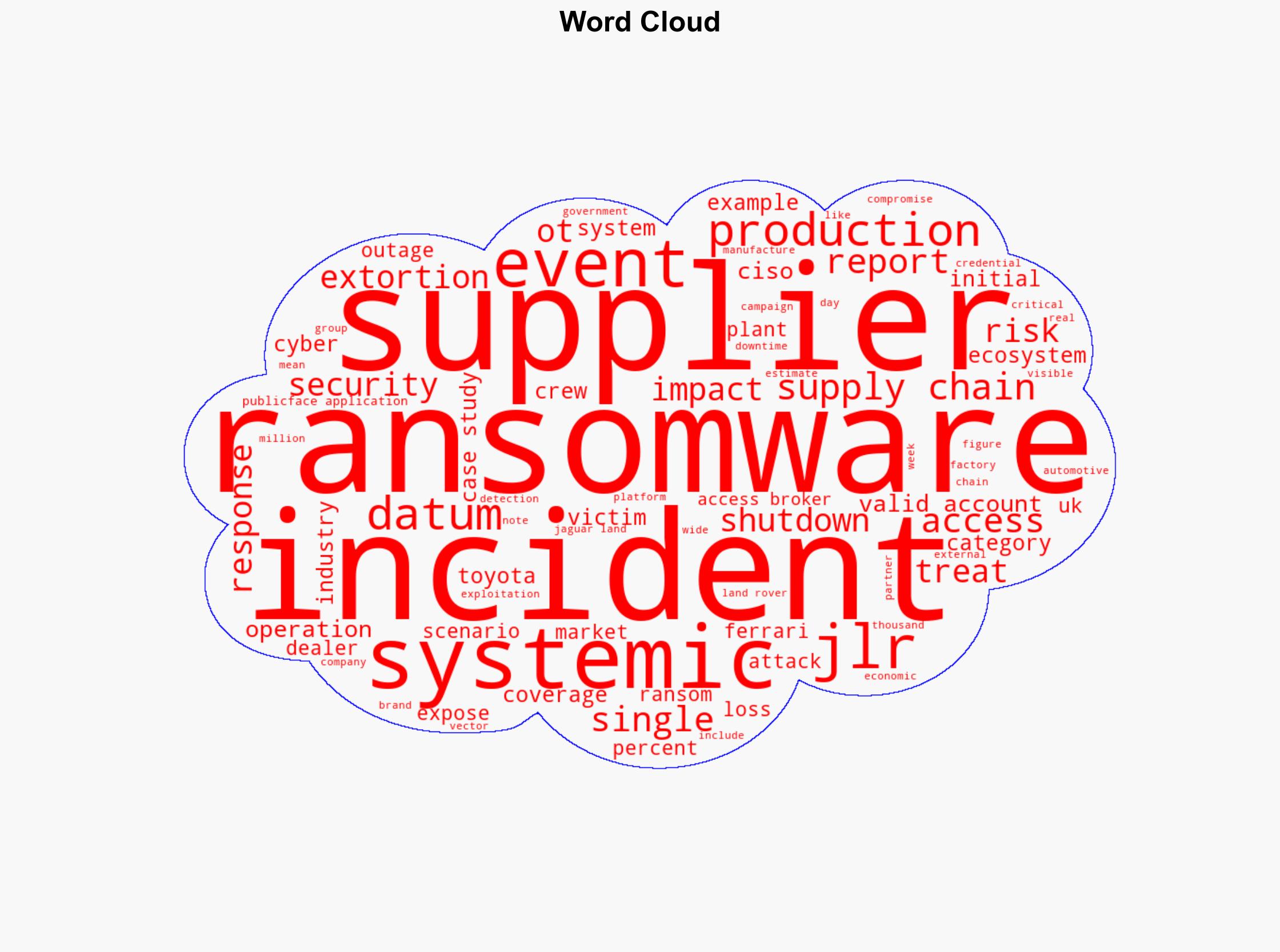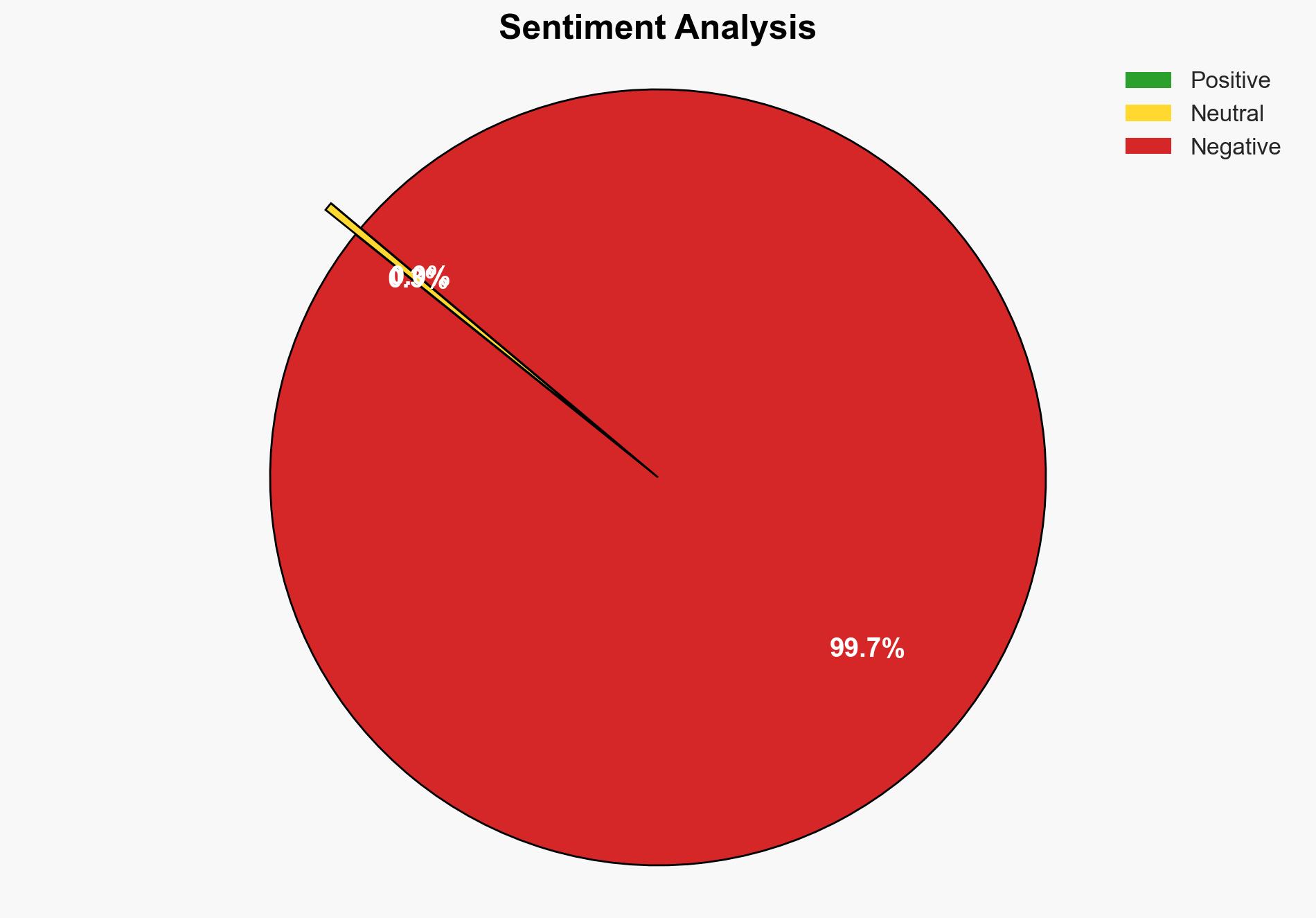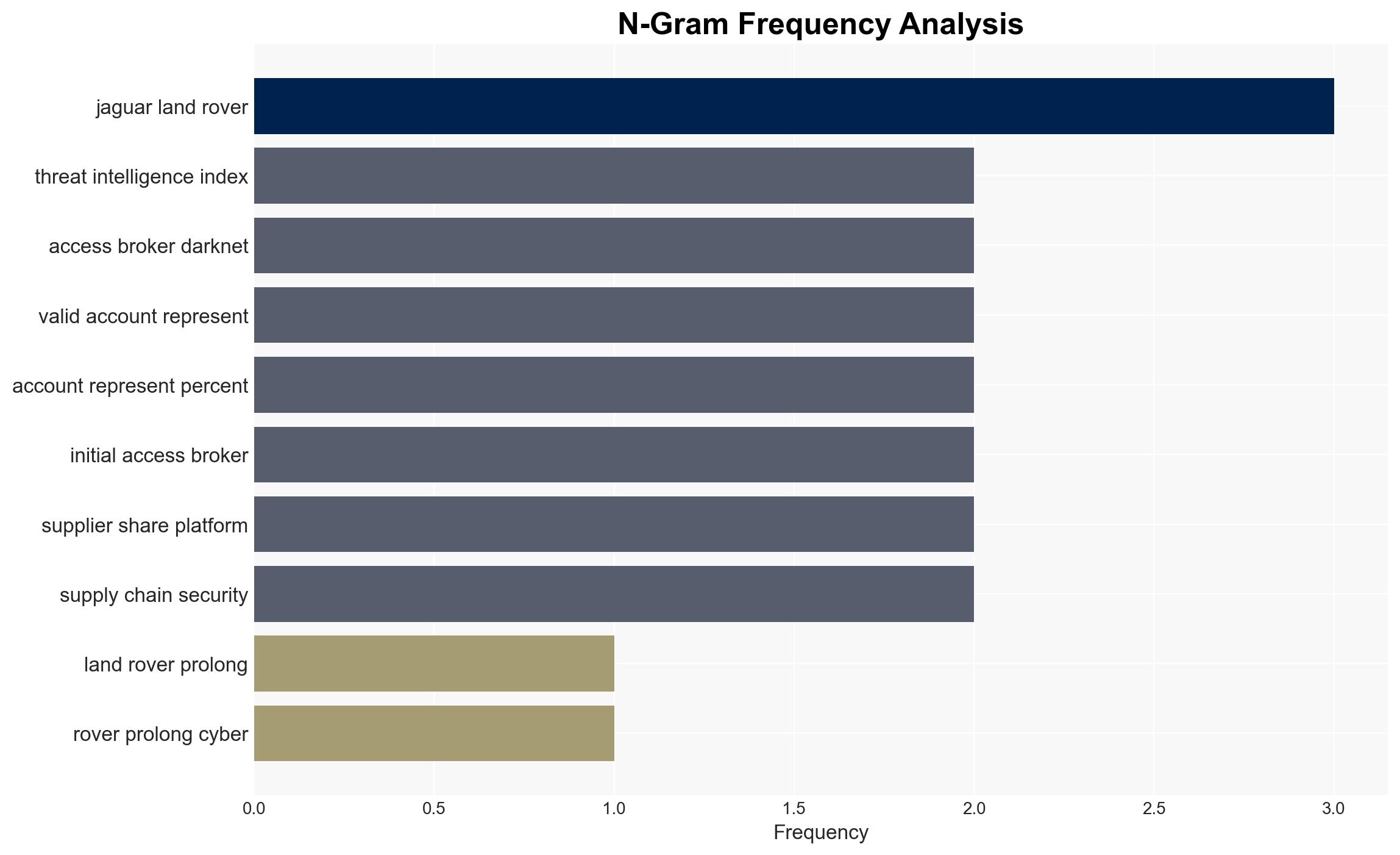Jaguar Land Rover’s Cyber Incident Highlights Systemic Risks of Category 3 Supply Chain Ransomware Attacks
Published on: 2025-11-26
AI-powered OSINT brief from verified open sources. Automated NLP signal extraction with human verification. See our Methodology and Why WorldWideWatchers.
Intelligence Report: Systemic Ransomware Events in 2025 – Jaguar Land Rover Case Study
1. BLUF (Bottom Line Up Front)
The Jaguar Land Rover (JLR) ransomware incident exemplifies a Category 3 supply chain breach, highlighting the potential for single cyber events to escalate into macroeconomic disruptions. The most supported hypothesis is that the incident is part of a broader trend of systemic ransomware attacks targeting critical manufacturing sectors. Confidence level: High. Recommended action: Strengthen cybersecurity protocols across supply chains and enhance government-industry collaboration to mitigate systemic risks.
2. Competing Hypotheses
Hypothesis 1: The JLR incident is an isolated case of ransomware exacerbated by unique vulnerabilities within JLR’s supply chain.
Hypothesis 2: The JLR incident is indicative of a broader trend where ransomware attacks are increasingly targeting critical manufacturing sectors, aiming to cause systemic disruptions.
Assessment: Hypothesis 2 is more likely given the pattern of attacks observed in the manufacturing sector over the past four years, as highlighted by IBM’s Threat Intelligence Index. The professionalization of attackers and the use of initial access brokers further support this hypothesis.
3. Key Assumptions and Red Flags
Assumptions: It is assumed that the attackers had specific knowledge of JLR’s supply chain vulnerabilities. The reliance on public reports for economic impact estimates could introduce bias.
Red Flags: The rapid escalation from a single incident to a systemic event suggests potential gaps in JLR’s cybersecurity posture. The involvement of initial access brokers indicates a sophisticated threat actor.
4. Implications and Strategic Risks
The JLR incident underscores the risk of cascading threats where a single cyberattack can lead to widespread economic repercussions. Potential escalation scenarios include increased government intervention in cybersecurity, heightened regulatory scrutiny, and potential geopolitical tensions if state-sponsored actors are involved. The economic impact, including potential insolvencies among suppliers, poses a significant risk to national GDP.
5. Recommendations and Outlook
- Actionable Steps:
- Enhance cybersecurity measures across supply chains, focusing on critical suppliers.
- Develop government-backed cybersecurity frameworks to support industry resilience.
- Encourage information sharing between private and public sectors to identify and mitigate threats early.
- Best Case Scenario: Strengthened cybersecurity measures prevent future systemic disruptions, stabilizing the manufacturing sector.
- Worst Case Scenario: Continued ransomware attacks lead to significant economic downturns and increased geopolitical tensions.
- Most Likely Scenario: Incremental improvements in cybersecurity posture reduce the frequency and impact of systemic ransomware events.
6. Key Individuals and Entities
No specific individuals are named in the source text. Key entities include Jaguar Land Rover, IBM, and the UK government.
7. Thematic Tags
Cybersecurity, Supply Chain, Ransomware, Manufacturing, Economic Impact
Structured Analytic Techniques Applied
- Adversarial Threat Simulation: Model and simulate actions of cyber adversaries to anticipate vulnerabilities and improve resilience.
- Indicators Development: Detect and monitor behavioral or technical anomalies across systems for early threat detection.
- Bayesian Scenario Modeling: Forecast futures under uncertainty via probabilistic logic.
- Network Influence Mapping: Map influence relationships to assess actor impact.
Explore more:
Cybersecurity Briefs ·
Daily Summary ·
Support us





